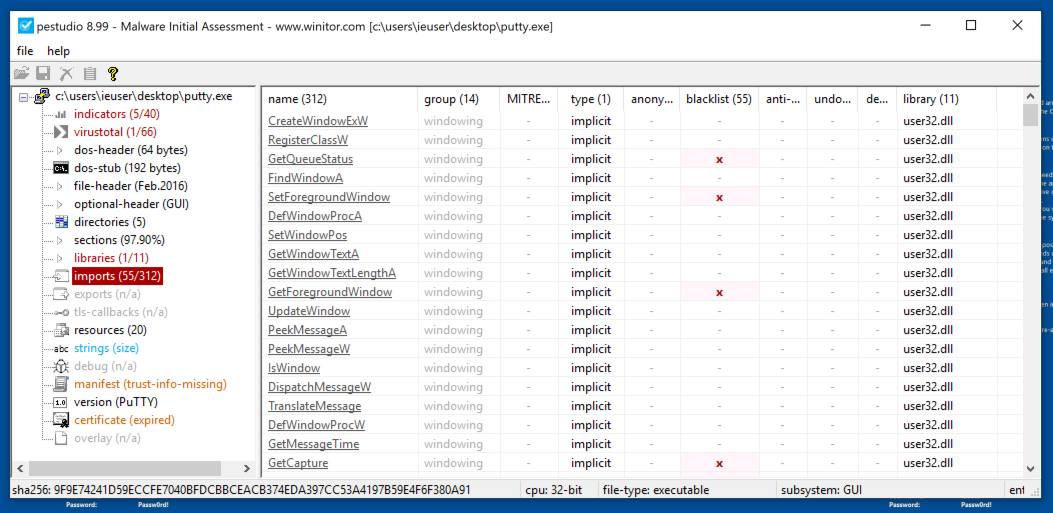

For this reason, it's useful to note hash values of the sections that comprise the malicious program.

Hash values could be used as indicators of compromise (IOCs), but malware authors can easily tweak the specimen to change the file's hash. You many of these details through other means however, it's very convenient to capture this information on one shot.įor instance, PE Studio not only shows the names and other properties of the PE file's sections, it also automatically computes each section's MD5 hash. PE Studio by Marc Ochsenmeier is a GUI tool for statically examining many aspects of a suspicious Windows executable file, such as imported and exported function names and strings. Let's take a look at a few static analysis utilities that run on Windows. Also, my webcast on getting started with malware analysis using REMnux showed several other Unix-based tools useful for this work.
PESTUDIO BLACKLISTED HOW TO
In an earlier post I discussed how to extract static property details a Linux environment by using MASTIFF.
PESTUDIO BLACKLISTED FREE
Let's take a look at several free Windows tools that are useful for extracting such meta data from potentially-malicious executables. This effort allows you to perform an initial assessment of the file without even infecting a lab system or studying its code. Examining static properties of suspicious files is a good starting point for malware analysis.


 0 kommentar(er)
0 kommentar(er)
